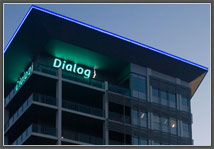Open Dialog Article
Which IT Service Delivery Model is right for your organisation?
Open dialog article,
By Uma Kannan, Senior Consultant, Dialog IT
There is an increasing drive in many businesses to reduce costs and improve operational efficiencies through technological innovation. This often translates into the need for a growing number of IT services, where success or failure of the business can hinge on its ability to facilitate these services on time, within budget, and to specification.
Developing in house IT capabilities to complete projects or provide services can be a costly and risky venture, particularly when the IT needs of an organisation are constantly changing. Indeed, in today’s business, very few companies have static IT needs.
When companies look for outside help in fulfilling IT business needs, they generally consider two delivery models: Staff Augmentation or Managed Services.
Organisations who choose to augment their IT capability will have external IT professionals join their existing teams. Augmentation allows companies to ramp up and down easily to meet changing demand without shouldering the cost and liabilities of additional full-time employees.
Managed Services is a framework that matches traditional project-centric outsourcing and may incorporate a range of “whole of life” services. Introduction of Managed Services into an organisation allows it to free up specialist knowledge within organisation and to focus on core business activities. This approach allows organisations the benefits of external expertise, cost management and risk mitigation so they can concentrate existing resources on their core operations.
Staff Augmentation
The staff augmentation model allows organisations to add staff to their existing teams based on the additional skills required to support their initiatives. This model allows rapid access to missing capabilities and skills.
Staff augmentation usually requires minimal contracting effort, has a simple cost model (i.e. rate times hours worked), can scale up or down quickly and has minimal impact on the existing operating model of the IT function within an organisation.
This approach allows organisations to augment existing in-house staff with outsourced workers. It usually leaves the management and technical leadership with the client while standard activities (e.g. development and testing) are augmented with service acquisition from a supplier.
With the Staff Augmentation model, the span of responsibility is usually quite narrow. It may include prototyping or technical implementation tasks as well as development and testing, nevertheless the product vision and decision scope of the augmentation team members is limited because they are directed by the client.
The typical client business driver for such a model is cost reduction.
The model allows for quick access to missing capabilities and skills, avoids of direct hiring and firing costs and is able to respond to staff shortages due to unexpected events. Costs are scalable to demand. However in the long term costs may be higher than Managed Services and there is a high client involvement in managing the extra resources.
Managed Services Model
As a framework for delivery of outcome related services, the Managed Services Model works best with a specification with a defined scope, budget and duration. The supplier accepts risk and takes control of the execution of the project. With result-based pricing, the supplier manages the delivery model, including governance, processes and tools.
The Managed Services Model draws on detailed planning. The client must define the requirement for the practical outcomes, applicable service levels and key performance indicators in an operational context. Pricing is directly related to this array of outcomes, and a key focus will be the delivery of benefits and outcomes the client wants to achieve.
As the supplier assumes the delivery risk, it is highly motivated to establish productivity control measures to ensure achievement of outcome and service commitments. This manifests itself in the implementation of project governance, methodology, tools and processes.
This model allows an organisation to outsource the management, operations and delivery of processes to lower the total cost of the business. It is sometimes attractive to organisations as the pricing structure is based on regular monthly billing with guaranteed service levels, quality and throughput. This greatly reduces volatility in costs, and supports accurate and predictable budgeting.
Comparing Managed Services to Staff Augmentation
| Managed Services | Staff Augmentation |
| Supplier assumes control of all or part of the execution component of IT. | Supplier commits to providing resources of defined capability at a price. |
| Service Delivery commitments expressed as “Service Levels” | No service delivery commitments |
| Committed Scope and Term which ensures accountability | Limited commitment |
| Costs can be tied to quantifiable results | Pricing tied to hours worked and availability |
| Supplier Managed Delivery Model, processes and tools | Customer manages the delivery model (including individual subcontractors); process and tools |
| Knowledge must be transferrable according to a contractual commitment | Knowledge vested in the individual |
| Supplier manages the risks of meeting project deadlines, transition and operations | All delivery risk remains with Business |
Conclusion
Determining the correct service delivery model is critical to businesses in order to achieve a quality outcome on time and within budget.
Dialog Information Technology offers both service delivery models to over 300 clients.
Learn more about Dialog Information Technology
I am looking for an experienced IT service provider.
Discover our ExpertiseI am interested in joining Dialog Information Technology.
Careers AvailableI would like to learn more about Dialog Information Technology.
Find out More
© Dialog Pty Ltd ABN 16 010 089 175 - Ph: 1800 DIALOG . dialogit@dialog.com.au
This work is copyright. Except as permitted under the Copyright Act 1968 (Aust Commonwealth), no part of this publication may be reproduced by any process, electronic or otherwise, without the specific written permission of the copyright owner. Neither may information be stored electronically in any form whatsoever without such permission. This document does not constitute advice and Dialog recommends that readers exercise their own care, skill and diligence with respect to the use, interpretation and reliance on this document. Trademarks mentioned are the property of the owner.


